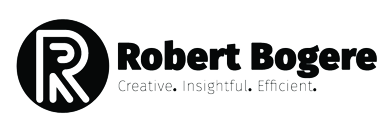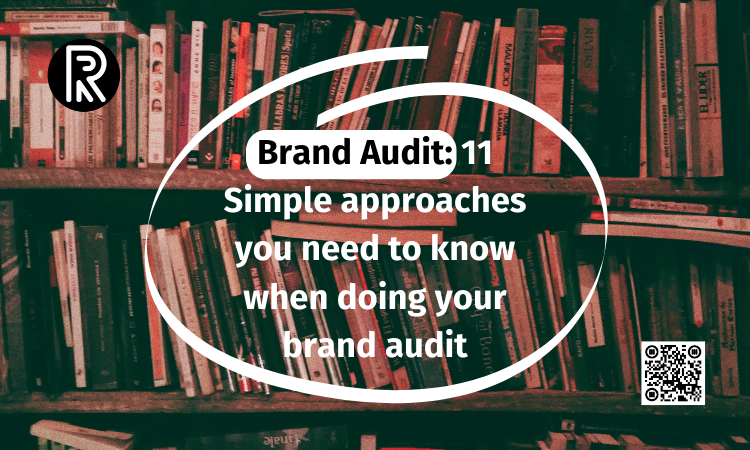Last Updated on Fri-Mar-2024 by Robert Bogere
Developing your search engine optimization (SEO) strategy can be a tough game to play when you don’t know the right tools to carry out your keyword research, topic ideas, website audit and traffic, competitor analysis, link building, etc.
3 years ago, when involved more in content marketing, I got introduced to the SEMrush tool in a HubSpot course.
Since then, I noticed a powerful tool that was so important in helping me to know how my clients’ websites perform through finding proper keywords. And now helping me with my website to write better articles for my audience to keep them around.
Do you have traffic issues with your website? Or want to know your website performance? Topic ideas? Want to level up your SEO strategy? What?
If yes, worry no more. In this article, you’ll learn;
- What is the SEMrush tool?
- The usefulness of this SEMrush tool
- Who is SEMrush tool for
- How to use the SEMrush tool for SEO for beginners
- Is it an SEO tool?
- Is it a free tool?
All in one article. Settle down as I take you through this tool.
If you’re already using this tool, the better. You know what I’m talking about, but those without its knowledge stay on as I take through it. Before furthering our discussion;
What is the SEMrush tool?
Semrush is an online visibility management and digital marketing platform – SEMrush.
Put, it’s a modern powerful tool that specializes in search engine optimization, online competitor analysis, keyword research, digital campaign optimization, etc
In simpler terms, it’s a software tool that helps marketers and other people to optimize their websites for meaningful organic traffic.
With insights and data at your exposure, you can make informed decisions on what to do to make your campaigns, website, and online channels better than before by tracking the right keywords for your audience and industry.
This tool has a range of inbuilt tool kits tasked to do unique tasks from tracking, tweaking, and enhancing your campaigns.

The usefulness of the SEMrush tool
Are you planning to level up your search engine optimization (SEO) strategy? Think of the SEMrush tool because of its many in-built toolkits.
Website performance
The above answers your questions about what you need to use this tool for, why you need to use the SEMrush tool and the importance of the SEMrush tool. This takes us to another part of how to use this tool for SEO.
With experience, it’s hard to tell if your SEO strategy works or not because such a strategy is a long term but with such a tool, you know if your efforts are working or not. Knowing all the above, you can enhance your campaigns for better performance.
As mentioned earlier, this tool will help you in knowing how your site is performing in terms of visitor clicks, website, and keyword positioning, backlink building, etc
Knowing your keywords or phrases
Think of the process you’ve used to search and land on this kind of article. Those keywords or phrases you’ve used and landed here are exactly what SEMrush tool will help you find your relevant keywords within your industry.
That way, SEMrush helps online strategists find out relevant keywords needed to use within their projects. Within the primary tool, there’s a keyword research toolkit that helps to find out the right low-volume keywords you need to use and drive traffic to your site.
With keywords, it’s advisable to use more long tail keywords—2 to more words drive more relevant leads to your company
Competitor analysis
SEMrush will help you find out how your competitors are performing online. For example, to find out how your competitors’ articles are performing, you insert their domain names in the toolkit for competitors and get their keywords, sources of their traffic, and backlinks.
After knowing their traffic keywords, you can leverage the same keywords to change your strategy to rank better.
Backlinks building
When you build meaningful backlinks to your site, search engines like Google will notice that this is an insightful website and then refer meaningful traffic to it.
However, such backlinks should come from credible and authoritative sources. With the SEMrush tool, you’ll get to know the sources where you can earn more traffic by use of tracking backlinks.
Knowing your traffic
This tool will help you monitor some locations and keep your audience ever happy with your valuable and meaningful content.
Some brands don’t know where their traffic comes from, whether countries, keywords, and demographic, etc, but with SEMrush you know the traffic, where it comes from, and how to maintain such traffic to keep it around.
Who is SEMrush for?
This tool is for people doing;
- Website Owners
- Content Marketers
- Social media and digital marketers
- Search Engine Optimization strategists
How to use the SEMrush tool for SEO
In this part, you’ll learn the toolkits within the SEMrush tool. When you log in, you’ll see different toolkits – competitive research, keyword research, Link building, on-page and technology SEO, local SEO, advertising, social media, content marketing, trends, and agency solutions. Picking a particular toolkit will depend on your target.
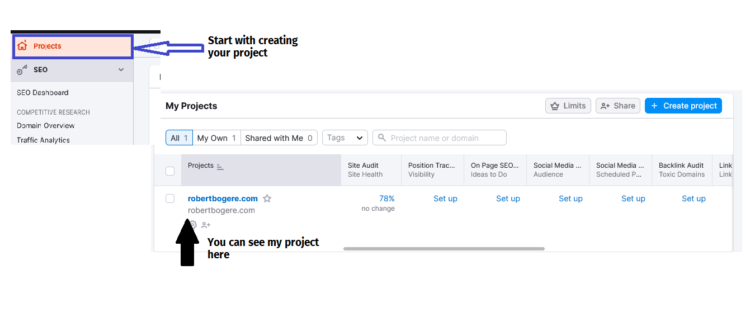
To follow through properly, It’s good when you’ve already applied for a SEMrush tool subscription whether for a free trial or a paid plan. In case you’re not subscribed to any plan, GET STARTED here for a free trial.
Do you want to audit your website? Searching for a particular keyword for your article? You’ll find everything in various toolkits as below;
A) SEMrush SEO dashboard
When you login into the tool, you’ll see a dashboard that allows you to observe the different data and insights of your project. You’ll see different analytics – site authority, position, traffic, errors, and broken links displayed in various metrics.
This is a 1 stop center of all your project traffic analytics. You’ll need to click on any widget to observe more data and insights which will help you to improve or modify your project. View how to use it. Note that my site is just making two (2) months. It’s still new.

B) SEMrush keyword research tool
Every SEO strategist starts with learning how to do keyword research—identifying important keywords to rank for. Here, you’ll be able to insert and find out very high, high, and low competitive keywords you can select for your particular project.
You can search and find the most relevant keywords and content ideas—search volume and ranking for site optimization of any industry you deal in.
With this tool, you need to insert the keyword of your choice and get a list of keyword ideas and data. Things like the volume of the estimated search from any country, global volume, total times the keyword featured, keyword difficulty, cost per click (CPC)—the amount it costs you a particular keyword in an ad.
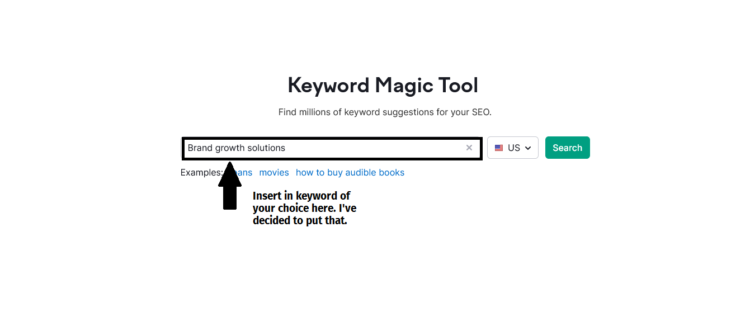
Tracking your keywords, you’ll possibly know how best such words rank to Google. Within this tool, there are other toolkits;
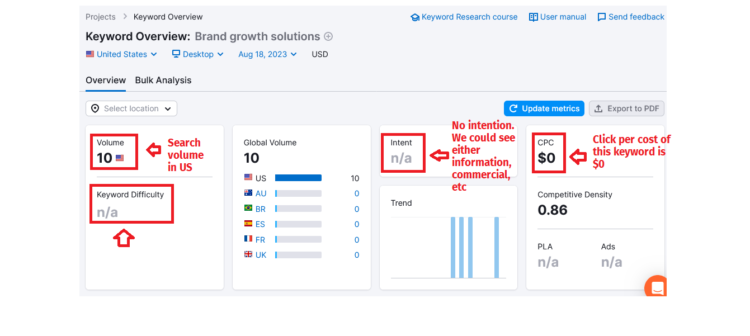
Keyword magic tool
With this tool, when you insert any keyword of your choice, you’re offered various ideas related to it. For better results, it’s advisable to first filter by volume, difficulty, CPC, etc.
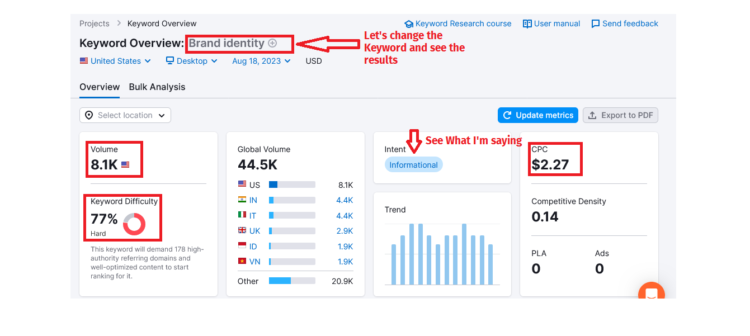
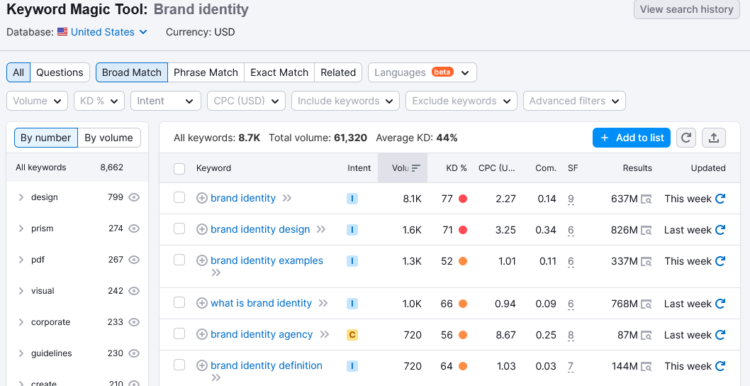
Keyword Manager
This tool helps to analyze a list of up to 2k keywords at once. This helps you to be at the top of your game in keywords.
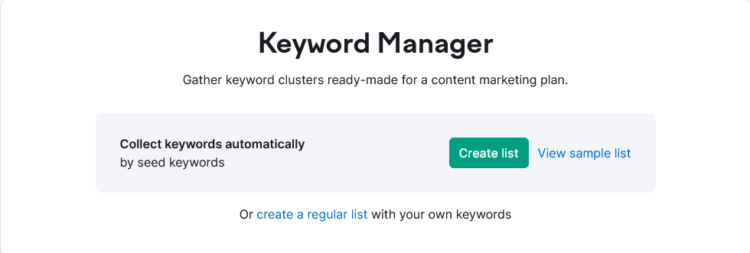
It also keeps you up-to-date with the inserted keywords. This can help to edit your articles or page at any given time
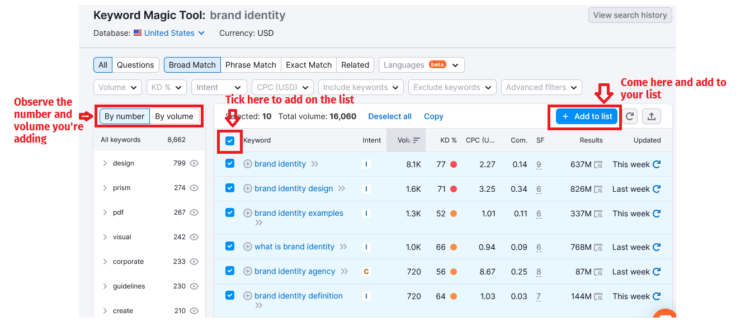
Position tracking
Such a tool will track your site performance over time. This tool helps you to know your website ranking in various geographical areas and devices being used when searching.
It’ll release data and insights about visibility, estimated traffic, and average position. Also, you can monitor your local SEO with it. Note this site is still new.

Organic traffic insights
This tool brings together the SEMrush tool, Google Analytics, and Google search console together. To use it, you’ll need to link all three (3) together. After linking them, you’ll see numerous insights and data—position, impressions, post click, etc.
C) SEMrush competitive research
Within this toolkit, they’re four different tools as below;
Domain Overview
This overview tool will provide a quick, actionable snapshot of your site, sub-folder, or sub-domain’s online visibility across all channels—backlinks, organic traffic, and authority score. Within the overview, there’re other tools like as below;
Compare domains—With this, you’ll compare various domains against 4 of your top competitors
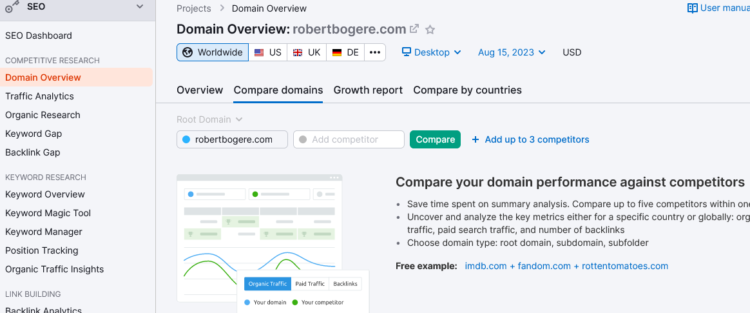
Growth report—You’ll learn the variations in your domain’s particular period
Country comparison—Here you’ll compare traffic from various countries (5 of them). It helps you to notice how your website is performing in the top 5 countries.
Traffic Analytics
Such a tool will analyze your website traffic. Here you’ll see visits, unique visitors, pages/visits, average visit duration, and bounce rates. While observing your traffic, you’ll learn how your visitors interact with your website. You’ll know your traffic sources and how much change over some time.

Organic research
With this tool, you’ll learn a lot of things from it like total organic keywords your website ranks for, traffic your site receives from Google, and traffic cost which estimate your site’s worthiness.
Other tools you’ll find are position, position changes, competitors, pages, and sub-domains. With the position widget, it’ll show all the keywords your domain ranks for. It’s advisable to filter your data.


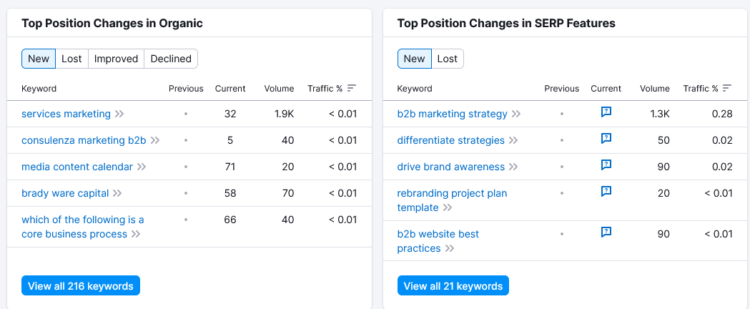

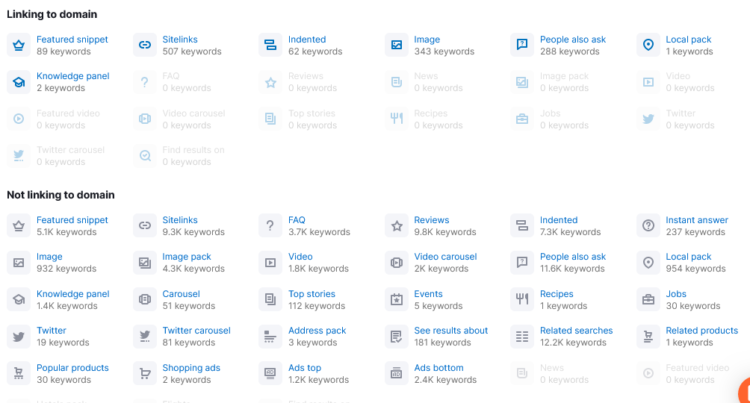
The tool will show up to 5 keywords. You’ll also see the keyword volume, difficulty, intent, and SERP features and advanced filters. The higher the keyword difficulty volume, the more difficult to rank with such a keyword.
Keyword Gap
This tool will display a list of keywords of up to 4 of your competitor’s rank for. You can insert 4 of your competitors to find out their unique keywords: weak, strong, and missing keywords.
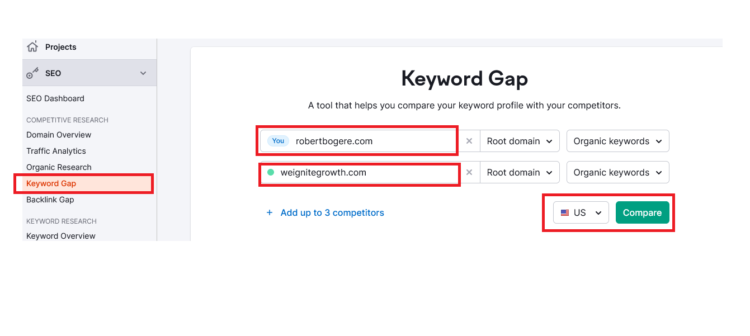
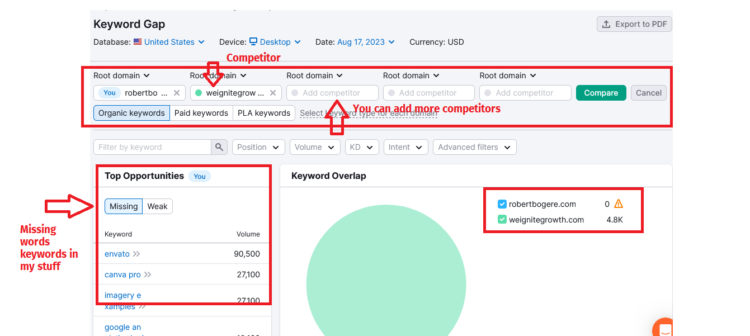
Backlink gap
It’ll analyze and compare the backlinks of up to 4 competitors. Insert four of your competitors and see how many backlinks send traffic to your competitors.
D) SEMrush Link building
In the SEO strategy, link building is so essential. Developing links is key to flowing organic traffic and enhancing your domain authority. With the SEMrush tool, you can monitor your site’s backlink profiles, and anchor text usage—follow or not follow your strategy.
Backlink analytics
With the analytics tool, insert your domain name here and see the data of your website backlink profile. Under this tool, you’ll find snippets—overview, network graph, backlinks, anchors, referring domains, indexed pages, outbound domains, competitors, and referring IPs.
Of course, we shall not go through all of them, but these can help you see the overall backlink profile and broken links.
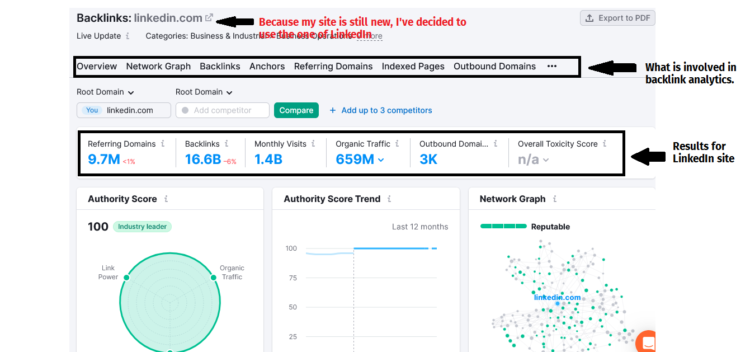
Backlink audit
With such an audit, you’ll know spammy and authoritative links. Insert your domain into the above tool and receive in-depth data and insights on the links which refer traffic to your site.
Your audit will give you 3 results: toxic, nontoxic, and potentially toxic. It’s advisable to have the highest index on the nontoxic and no index (zero) on the toxic. Just select your domain below to carry out this audit.
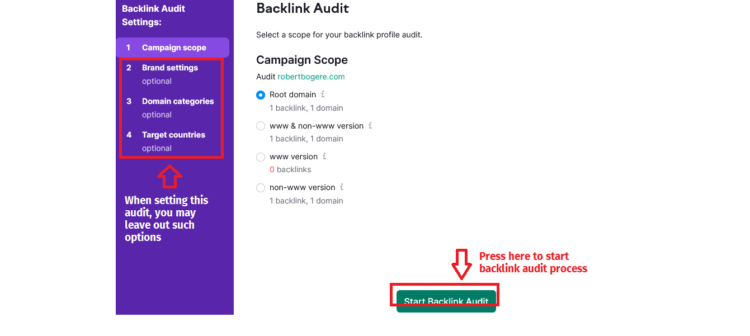
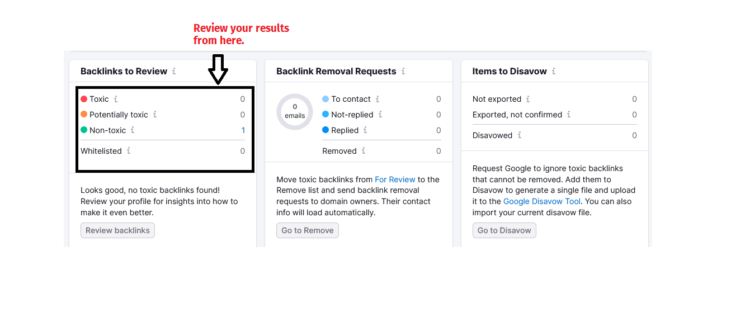
Link building tool
Insert keywords of any kind you would want to rank for and also add your competitor websites. Such a tool will help you identify and engage with outbound sites for meaningful potential link-building opportunities. Again, it’ll your backlinks attained and their influence.
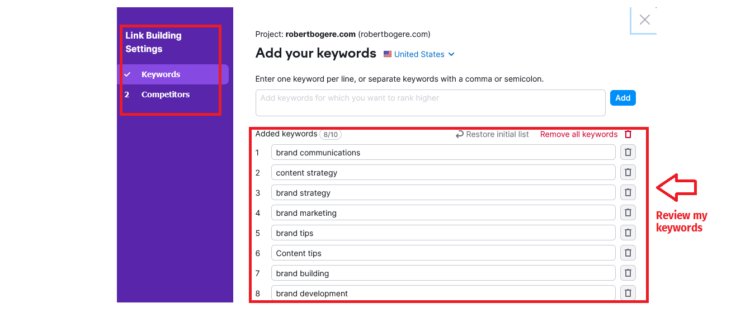
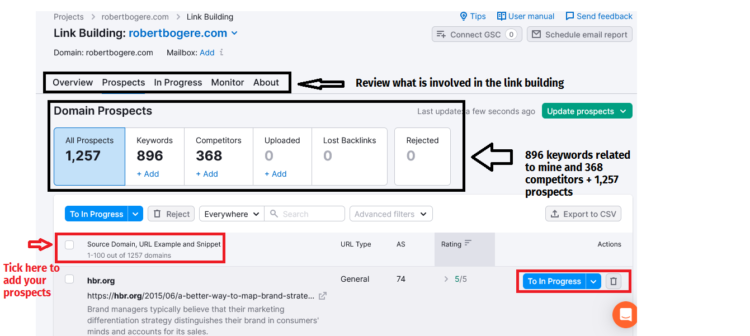
Bulk analysis
When you insert your domain, the tool will compile a table having data on the backlinks each domain has. With such a tool, you’ll compare some URLs at once.
E) SEMrush on-page and tech SEO
SEMrush tool will help you analyze and improve your current website’s on-page and technical SEO status. It’ll help you make a healthy checkup. Such will audit and analyze your website accessibility and see errors you’ll need to fix.
SEMrush audit tool offers in-depth insights and data which can help you, the site owner, to take measures to improve your website. Review a snippet of my stuff below.
Site audit
This tool can perform over 140 on-page and technical SEO checks to identify your site issues in need of improvement.

The good thing is, it’ll provide you with what you can do to fix your site errors. With it, you’ll see how your site changes over time.
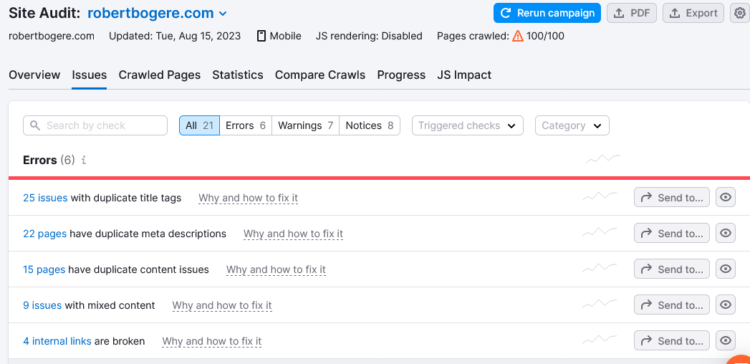
On-page SEO checker
This tool will audit your content details like—title and heading tags. You’ll notice it gives ideas of the related terms you should insert in your content when writing your posts plus website sources to receive meaningful backlinks.
The good thing is, it points to backlink requirements, target content length, and visitor experience recommendations.



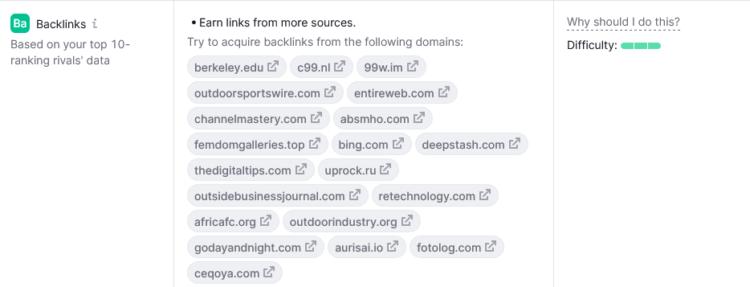
Log file analyzer
This tool helps in identifying the weakest parts of your website. What I can say is, it’s a more technical tool, but it helps to determine how Googlebot interacts with and crawls your website. It points out your most crawled web pages and how bot activity differs on devices like phones, tablets, desktops, etc.
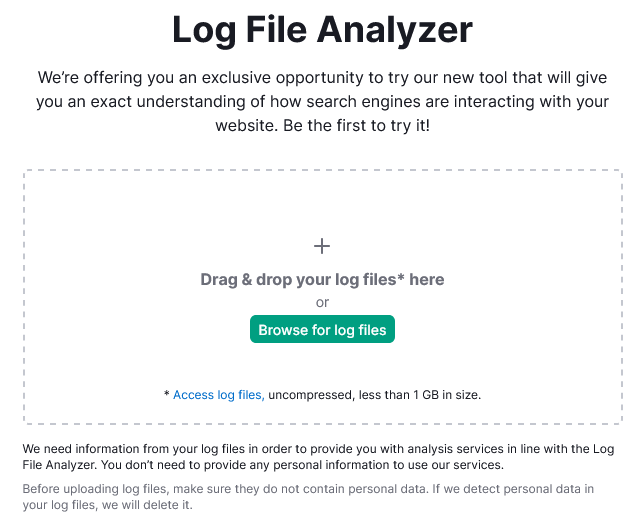
F) SEMrush local SEO
With this tool, you’ll identify tools like listing management, review management, position tracking, site audit, and on-page SEO checker.
Local means your serving region. Here you get the advantage of knowing your online reputation in your local presence.
List management
With this tool, you’ll learn to establish and maintain your region listings. Also, this tool can forward your data to online business directories. Registering your website details to numerous directories becomes easier.
You should edit your details in one fixed place to avoid future issues or challenges. With it, you’ll receive review statistics.
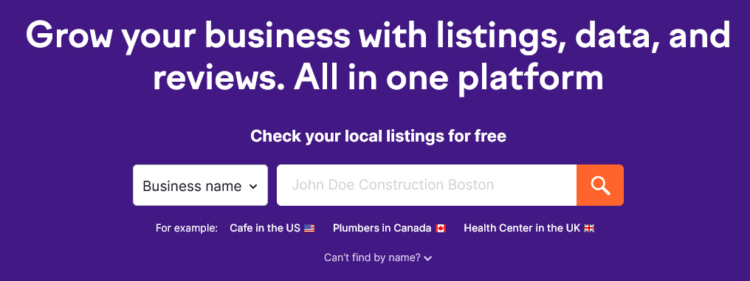
Review management
Here you can observe your digital reputation and authority because this tool gathers data on your directory reviews. It organizes your reviews in the format of star ratings, as they would appear on the business directory site. You’ll receive graphs and charts which reflect when you received each review.
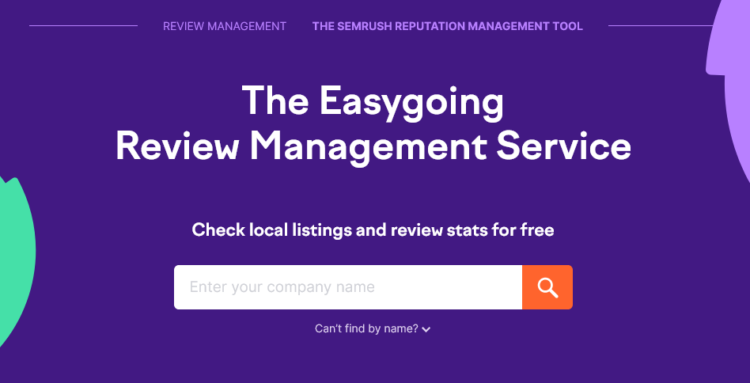
G) SEMrush Advertising
This tool helps people who advertise on Google. If you’re not among these people, then this tool isn’t for you.
In the tool, you’ll find market analysis with features like domain overview, advertising research, display advertising, PLA research with features like keyword gap, magic tool, manager, PPC keyword tool, Ads history, Ad tracking, and position tracking.
Of course, we shall not go through every detail, but let us look at a few features;
Advertising research
With this tool, you’ll know your competitor keywords and Ad copy. These keywords are what your competitors bid on when doing search engine marketing.
With the researched keywords, you can get to know the exact ads attached to such keywords. Also, the tool can help you know the spending of your competitors on their ads.
What you need to do is to insert a domain name of your competitor in the advertising research bar and carry out the search
PLA research
PLA means Product Listing Ad. This tool is more useful to e-commerce brands who also carry out shopping Ad campaigns for their products. With such a tool, you’ll gain insights into your competitor’s SEO efforts. This tool can help you know what to display to your shoppers.
PPC keyword tool
Such a tool, it’ll help you organize all your keywords to plan for a meaningful Ad campaign. It will point out positive and negative keywords you need to rank for. When you organize your Ad keywords, upload them to the Google Ads Editor.
Ads history
This tool will help you get ideas about how bidding habits evolve throughout a certain period based on specific keywords. When you insert your keyword, you’ll see the URLs which have ever used such a keyword in their ads.
H) SEMrush Social media
In this digital era, every brand needs a social media presence. This SEMrush tool has sub-tools like social posters, tracker, analytics, inbox, and influencer analytics. If you ask me where I pull some of my traffic from, I’ll vividly tell you from social media—Twitter and LinkedIn.
You can also monitor and track the performance of your competitor’s social media platforms. You’ll get complete data and insights about engagement rates and how often your competitors post their stuff.
Some SEO strategists don’t take seriously this tool, but it helps more in auditing all platforms from Instagram, Twitter, LinkedIn, Facebook, etc. Personally, before opening up my site, I used it to monitor my posts on LinkedIn.
This tool helps to schedule posts, and track, and analyze them from one place. Looking at the various tools, it has;
Social poster—This helps to schedule posts in advance. Using it, you can easily update your pages to keep your page consistent.
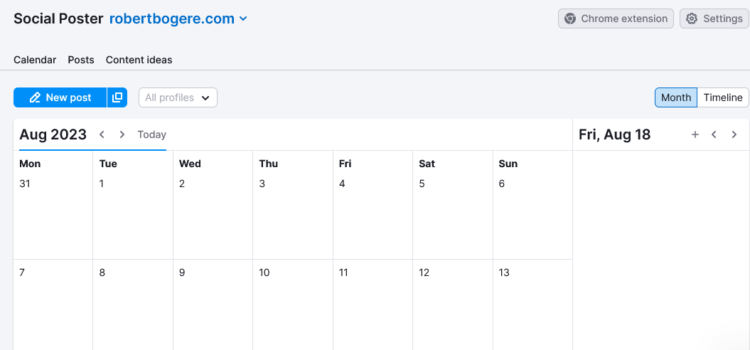
Social tracker—This will help you monitor how your posts are performing on various socials.
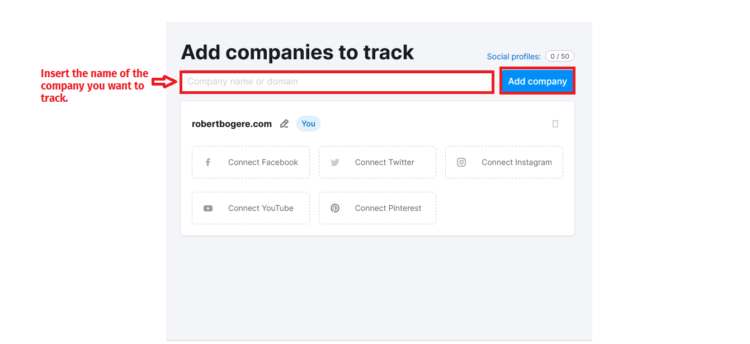
Social analytics—Such a tool will present you with in-depth insights and data. It’ll present you with various graphs and charts.
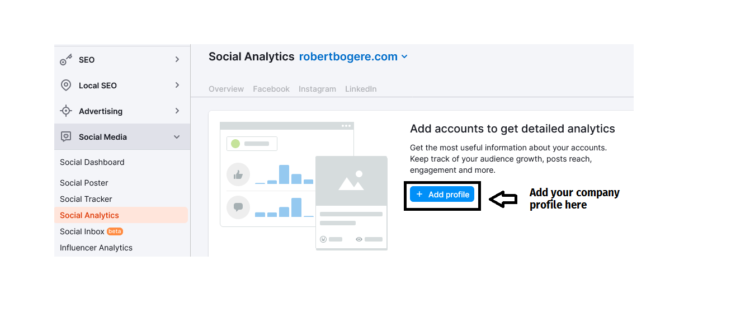
Social Inbox—This tool helps you to track your social media inboxes using one box. It helps to make your responses easy. You just need to insert any of your competitor’s domains in the advertising research bar and wait for the data.
I) SEMrush Content marketing
Personally, this is my favorite tool, being I write various articles to keep my audience around. This tool gives you topic ideas and content suggestions.
We shall briefly go through some tools within this toolkit below;
Topic research—What you need to do is to insert any sample topic and select your preferred location. When you select a mind map, you’ll see various topic ideas related to your topic.
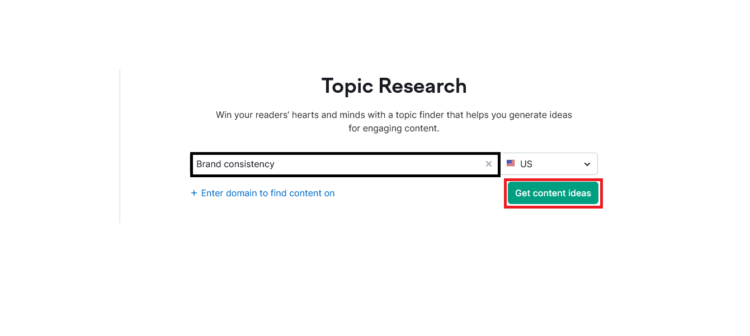
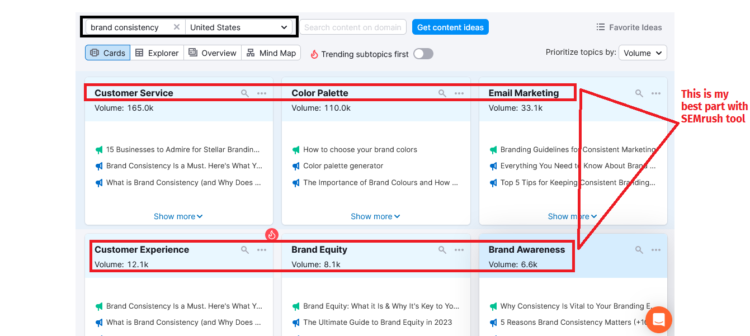
SEO Content Template—This template will help to provide you with semantically related words to add to your content. It’ll recommend to you websites where you can even get backlinks.
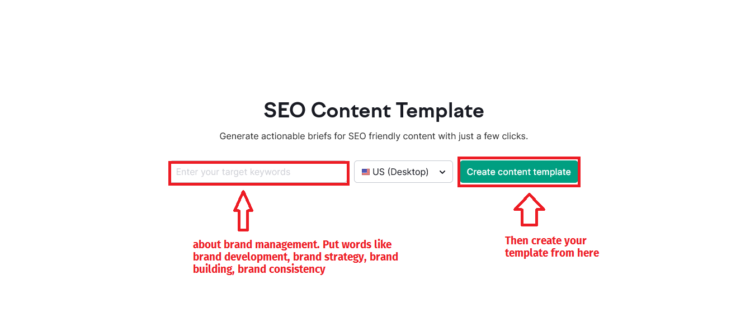
SEO Writing Assistant—This will help you write part of your SEO content while keeping your stuff in check throughout your writing process
Post tracking—This will analyze your post and present you with data and insights like—referral traffic, keywords, shares, backlinks, and estimated reach
Content Audit—This will provide you with tables and graphs to convey the quality of your content
Is SEMrush an SEO tool?
It’s more than just an SEO tool; it is a digital marketer’s go-to tool, empowering businesses to outperform their competition online.
From deep-dive keyword research to in-depth competitor analysis, SEMrush provides insights to drive your online visibility and boost organic traffic.
By harnessing the power of such a tool, you can unlock the full potential of your digital marketing strategy and propel your business toward success.
Is the SEMrush tool free?
On this planet Earth, whenever you find something completely free, take a step back and ask yourself WHY? There’s nothing good for free on this planet unless it’s something fake.
SEMrush tool isn’t free though you can get a free trial on two plans—PRO and Guru, but also limited to certain toolkits and functionality. When you pay annually, you save up to 17%
- PRO goes for $129.95/Month with an option of a free trial
- Guru goes for $249.95/Month with an option of a free trial
- Business goes for $499.95/Month—No free trial option
With its costs, you’ll wonder why it’s a bit costly, but using this tool, you’ll be able to access the largest keyword database in the market of over 24.7 billion keywords. That makes it unique, resulting to be costly.
About its offered plans, as mentioned earlier, the tool provides a free 14 day trial to new SEO users. At this stage, you can get a feel for SEMrush and then move to a paid monthly subscription. The difference between its plans is in the reports they provide you.
Below is what you can do with their free plan;
- 100-page examination of 1 project
- 10 keyword inquiries
- 10 keyword tracking
- Develop and operate 1 project
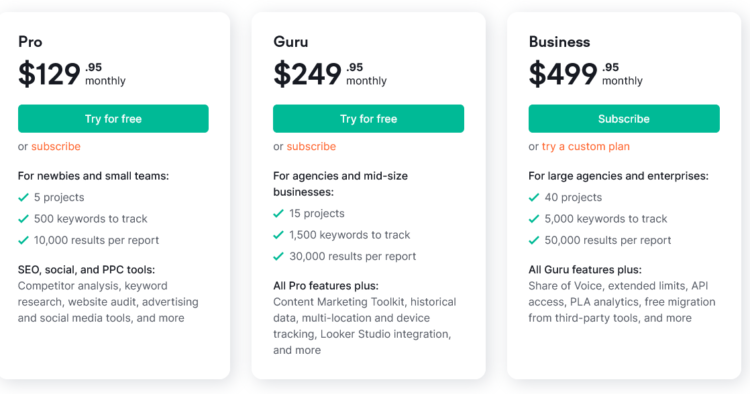
Recap of SEMrush tool
Now it’s your turn to unleash your potential as you delve into the world of SEMrush.
Reserve your time to know how this powerful tool empowers marketers, content creators, and SEO enthusiasts to harness the true potential of their online presence.
From keyword research to competitor analysis, SEMrush provides a comprehensive toolkit to sculpt your strategy and enhance your reach.
Remember, SEMrush isn’t just a tool—it’s a game-changer. Learn how its robust features seamlessly adapt to your needs, allowing you to fine-tune your strategies and witness your business growth.
Uncover the secrets of aligning your content with search intent, boosting your search engine rankings, and maximizing your business return on investment.
SEMrush’s customized pricing plans suit various budgets and ambitions. Whether you’re a solopreneur embarking on a digital journey or an enterprise seeking to dominate the online landscape, SEMrush offers scalable options to propel your success.
